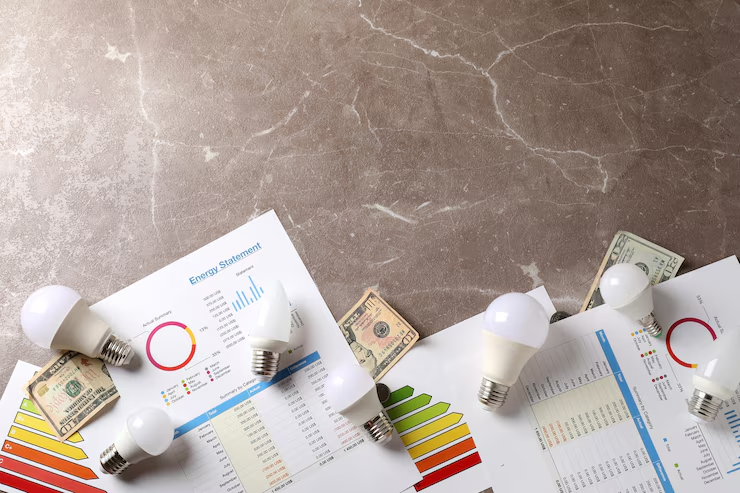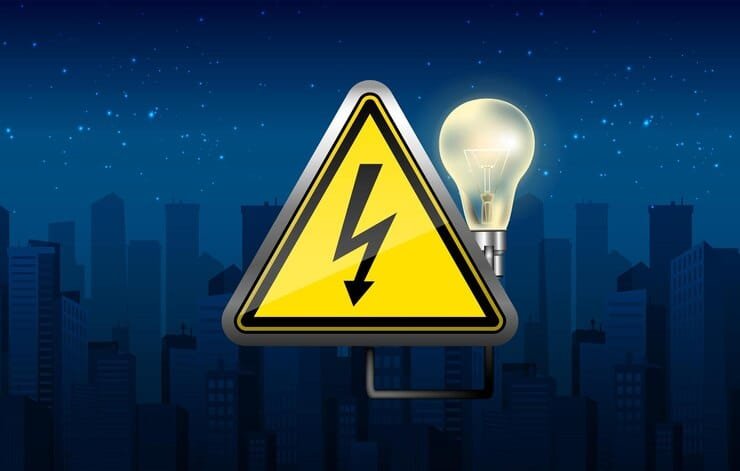Energy Efficiency’s SHOCKING Impact: Reshaping Utilities & Services Forever
Energy Efficiency’s SHOCKING Impact: Reshaping Utilities & Services Forever
Introduction: A Paradigm Shift in Energy Consumption
The global energy landscape is undergoing a dramatic transformation. Driven by escalating energy costs, tightening environmental regulations, and the urgent need to mitigate climate change, energy efficiency is no longer a mere consideration—it’s a strategic imperative. This shift is profoundly impacting utilities and service providers, forcing a re-evaluation of business models, technological investments, and operational strategies. While advancements in renewable energy sources garner considerable attention, the often-overlooked power of energy efficiency offers equally transformative potential, achieving significant reductions in energy consumption with immediate and lasting effects.
The Critical Role of Energy Efficiency Technologies
The advancements in energy efficiency technologies are nothing short of revolutionary. From smart grids and building automation systems to advanced materials and industrial process optimization, a diverse array of solutions are rapidly maturing, offering unprecedented opportunities for cost savings and environmental responsibility. These technologies are not merely incremental improvements; they represent a fundamental shift in how we produce, distribute, and consume energy. This blog post will explore the multifaceted impact of these technologies, examining their influence on:
- Utility Business Models: How are utilities adapting their pricing strategies and service offerings to incentivize and integrate energy efficiency measures?
- Service Provider Innovations: What innovative services are emerging to help businesses and consumers maximize energy savings?
- Technological Advancements: What are the key technological breakthroughs driving this transformation, and what are their implications?
- Regulatory Frameworks & Policy Impacts: How are governmental policies and regulations shaping the adoption and deployment of energy efficiency technologies?
This analysis will provide objective insights, leveraging data and case studies to demonstrate the profound and often unexpected consequences of this energy efficiency revolution. Understanding these impacts is crucial for energy professionals and business leaders seeking to navigate this rapidly evolving landscape and capitalize on the immense opportunities it presents. The following sections will delve into these critical areas, providing a comprehensive overview of energy efficiency’s transformative power.
Analysis of the Energy Efficiency Technologies Market: Key Trends and Actionable Insights
The energy efficiency technologies market is experiencing dynamic shifts driven by several converging factors, including climate change concerns, rising energy prices, and technological advancements. Analyzing these trends is crucial for strategic planning.

I. Positive Trends:
A. Increased Government Regulations and Incentives: Stringent environmental regulations and government incentives (e.g., tax credits, rebates) are significantly boosting demand for energy-efficient technologies. The Inflation Reduction Act in the US, for example, provides substantial tax credits for solar panels, heat pumps, and other energy-efficient upgrades, creating a lucrative market for related businesses. This trend is replicated globally with varying levels of intensity.
Impact: Companies specializing in technologies covered by these incentives see significant growth opportunities.
Actionable Insight: Companies should actively monitor and adapt to evolving regulatory landscapes in their target markets. Proactive lobbying efforts and strategic partnerships with government agencies can enhance market access. Example: SunPower leverages government incentives to increase its market share in residential solar installations.
B. Technological Advancements and Cost Reductions: Continuous improvements in technology are driving down the cost of energy-efficient solutions, making them increasingly accessible to a broader range of consumers and businesses. Advances in LED lighting, smart grids, and building automation systems are prime examples.
Impact: Increased affordability expands the market significantly, fostering competition and driving innovation.
Actionable Insight: Companies should invest in R&D to develop more efficient and cost-effective technologies. Strategic partnerships with technology providers can accelerate innovation and reduce development costs. Example: Siemens is a leader in smart grid technologies, continuously improving efficiency and reducing implementation costs.
C. Growing Consumer Awareness and Demand: Increased public awareness of climate change and the financial benefits of energy efficiency is driving consumer demand. This is particularly true amongst environmentally conscious millennials and Gen Z.
Impact: This growing market segment presents opportunities for companies focusing on consumer-oriented energy-efficient products and services.
Actionable Insight: Companies should focus on marketing and communication strategies that highlight the environmental and economic benefits of their products. Clear and accessible information, coupled with strong branding, is key. Example: Nest, with its smart thermostats, effectively targets environmentally conscious consumers.
II. Adverse Trends:
A. Supply Chain Disruptions and Material Costs: Global supply chain issues and fluctuating raw material prices pose challenges to the manufacturing and deployment of energy-efficient technologies. This can impact production timelines and profitability.
Impact: Increased costs can reduce market competitiveness and limit adoption.
Actionable Insight: Companies need to diversify their supply chains, secure long-term contracts with suppliers, and develop strategies to mitigate price volatility. Investing in robust supply chain management systems is crucial.
B. Lack of Skilled Workforce: The rapid growth of the sector creates a demand for skilled professionals in installation, maintenance, and technology development. A shortage of skilled labor can hinder deployment and market expansion.
Impact: Project delays, increased labor costs, and difficulties in maintaining quality can negatively impact profitability.
Actionable Insight: Companies should invest in training and development programs for their workforce and collaborate with educational institutions to develop a pipeline of skilled talent.
Conclusion:
The energy efficiency technologies market presents significant opportunities for growth and innovation. However, businesses must proactively address the adverse trends to ensure long-term success. By adapting to evolving regulations, investing in R&D, strengthening supply chains, and developing a skilled workforce, companies can capitalize on the positive trends and thrive in this dynamic market.
### Healthcare
Hospitals are significant energy consumers. Many are implementing energy-efficient HVAC systems with advanced controls, reducing energy waste from overcooling or overheating unoccupied areas. Real-time energy monitoring systems alert staff to equipment malfunctions, preventing energy loss and costly repairs. [1] LED lighting retrofits are common, offering significant energy savings and longer lifespan compared to traditional lighting.
Technology
Data centers are power-hungry. Companies like Google utilize free-air cooling techniques, leveraging natural airflow to reduce reliance on mechanical cooling systems. This reduces energy consumption and lowers operational costs. Virtualization technologies consolidate server resources, reducing the overall number of servers needed and associated energy usage. [2]
Automotives
Auto manufacturers are incorporating lightweight materials and aerodynamic designs to improve fuel efficiency in vehicles. Hybrid and electric vehicle production is rapidly expanding, representing a significant shift towards cleaner and more energy-efficient transportation. [3] Furthermore, advancements in battery technology are improving energy storage capacity and vehicle range.
Manufacturing
Industrial plants are adopting energy management systems (EMS) to optimize energy use across their facilities. These systems monitor energy consumption in real-time, identify inefficiencies, and provide actionable insights for improvement. [4] High-efficiency motors and variable frequency drives (VFDs) are being installed to reduce energy consumption in pumps, fans, and other equipment. Waste heat recovery systems capture and reuse heat generated during manufacturing processes, reducing the demand on primary energy sources.
Retail
Retailers are increasingly using smart lighting systems that adjust brightness based on occupancy and ambient light levels. Refrigeration systems are being upgraded to more energy-efficient models with improved insulation and optimized refrigerant management. [5] Building automation systems are being implemented to control heating, ventilation, and air conditioning (HVAC) systems based on real-time needs, minimizing energy waste.
Leveraging AI and Machine Learning for Predictive Maintenance
Since 2023, several companies have integrated AI and ML into their energy efficiency solutions. For instance, building management systems now utilize AI to predict equipment failures, optimizing maintenance schedules and minimizing downtime. This proactive approach reduces energy waste associated with malfunctioning equipment and extends the lifespan of assets. This predictive capability allows for targeted interventions, reducing the need for extensive, potentially energy-intensive, repairs.
Strategic Partnerships and Joint Ventures (Inorganic)
Companies are actively forming alliances to expand their market reach and offer comprehensive solutions. A notable example is the partnership between a smart grid technology provider and an energy storage company to offer integrated solutions for renewable energy integration and demand-side management. This synergistic approach allows both companies to tap into new customer segments and provide more holistic energy efficiency services. Such collaborations leverage existing expertise and infrastructure for faster market penetration.
Focus on Sustainability-Linked Financing and ESG Initiatives (Organic)
Many companies now emphasize sustainability in their financial strategies. This includes actively seeking out green financing options, aligning with ESG (Environmental, Social, and Governance) investment principles. Companies highlight their contributions to emissions reduction and energy efficiency improvements in their marketing materials to attract environmentally conscious investors and customers. This approach strengthens brand reputation and unlocks access to capital specifically earmarked for sustainable projects.
Development of SaaS-Based Energy Management Platforms (Organic)
The shift towards Software-as-a-Service (SaaS) models is evident. Companies are developing cloud-based platforms that provide real-time energy consumption data, analytics, and control functionalities to customers. This allows for remote monitoring and optimization of energy usage, offering scalability and ease of access. For example, a platform may provide dashboards displaying energy use trends across multiple buildings, enabling users to identify areas for improvement and track the impact of energy efficiency measures.
Expansion into Emerging Markets (Inorganic & Organic)
Companies are actively expanding their operations into regions with high growth potential in energy efficiency. This involves both organic growth through establishing new offices and teams, and inorganic growth via acquisitions of local companies with established market presence. For example, a European energy efficiency solutions provider might acquire a smaller firm in Southeast Asia to leverage its existing client base and local expertise, accelerating its entry into a new and rapidly developing market.

Outlook & Summary: The Energy Efficiency Revolution
The energy efficiency landscape is poised for significant transformation over the next 5-10 years. Technological advancements, coupled with evolving regulatory pressures and increasing consumer awareness, will reshape both the energy efficiency technologies sector and the broader energy efficiency services market.
Technological Advancements:
- AI and Machine Learning: Expect to see widespread adoption of AI and ML in optimizing energy consumption in buildings and industrial processes. This will lead to more precise and adaptive energy management systems.
- Smart Grid Integration: The integration of energy efficiency technologies within smart grids will become increasingly sophisticated, facilitating better demand-side management and enabling a more responsive and resilient energy infrastructure.
- Next-Generation Materials: Innovation in materials science will deliver more efficient insulation, windows, and building components, further enhancing energy savings.
- Decentralized Energy Generation: The proliferation of rooftop solar, coupled with energy storage solutions, will create a more decentralized energy landscape, impacting the traditional utility business model.
Impact on the Energy Efficiency Services Sector:
The advancements in technology will directly impact service providers. We expect a shift towards more holistic, data-driven service offerings. Traditional energy audits will be augmented by predictive analytics, allowing for proactive interventions and optimized energy performance contracts (EPCs). The demand for skilled professionals capable of deploying and managing these sophisticated technologies will grow significantly. Furthermore, the rise of decentralized generation will necessitate new service models focusing on integration and optimization of distributed energy resources.
Key Takeaway: Energy efficiency is no longer a niche market; it’s becoming a central pillar of a sustainable and resilient energy future. The convergence of technological innovation and evolving market dynamics presents both challenges and opportunities for businesses and professionals in this rapidly evolving sector.
Looking Ahead:
The question remains: How can energy efficiency services companies strategically adapt their business models and skill sets to effectively navigate this period of rapid technological advancement and capitalize on the significant growth potential within the sector?




